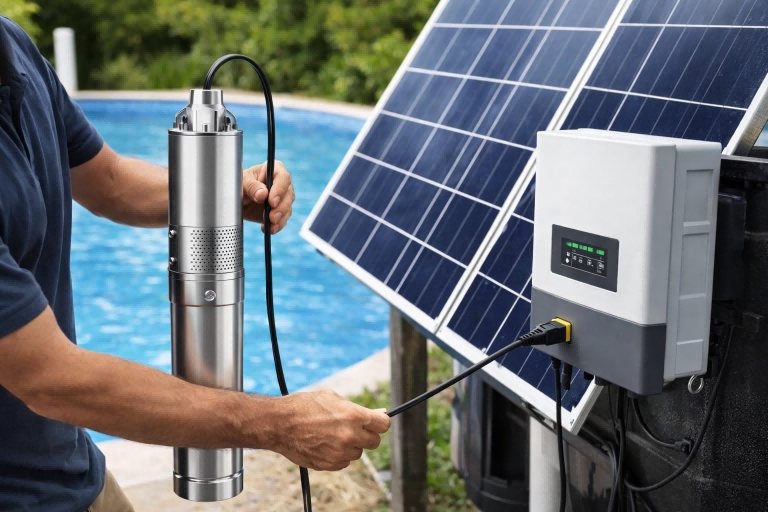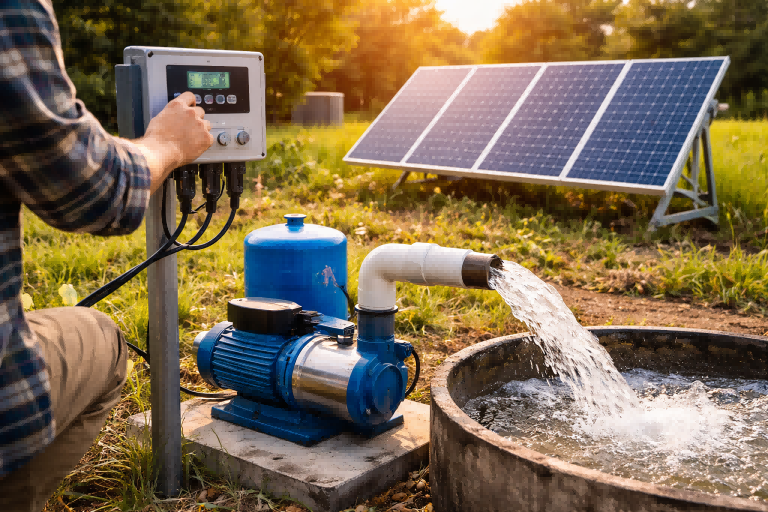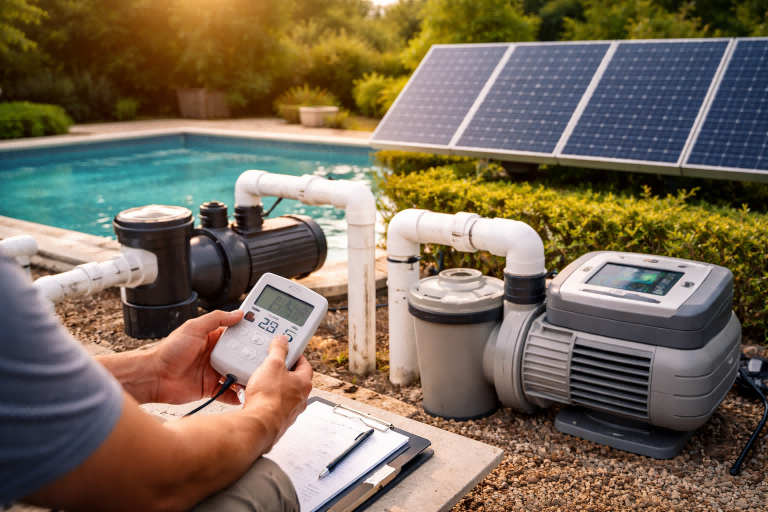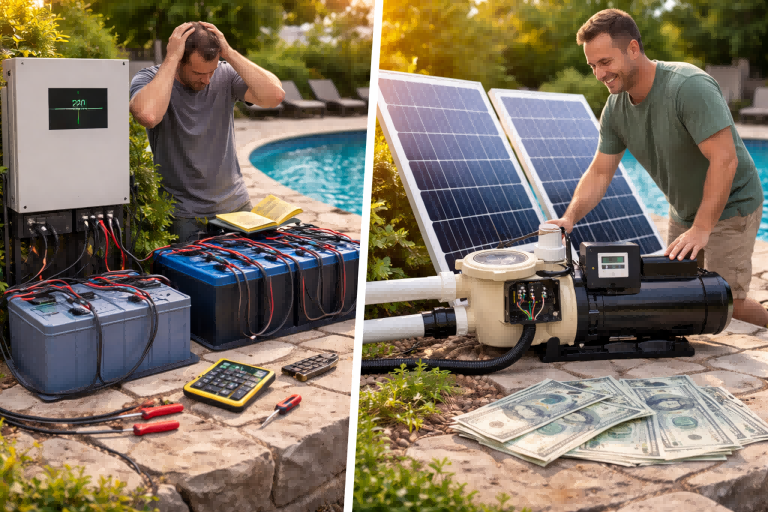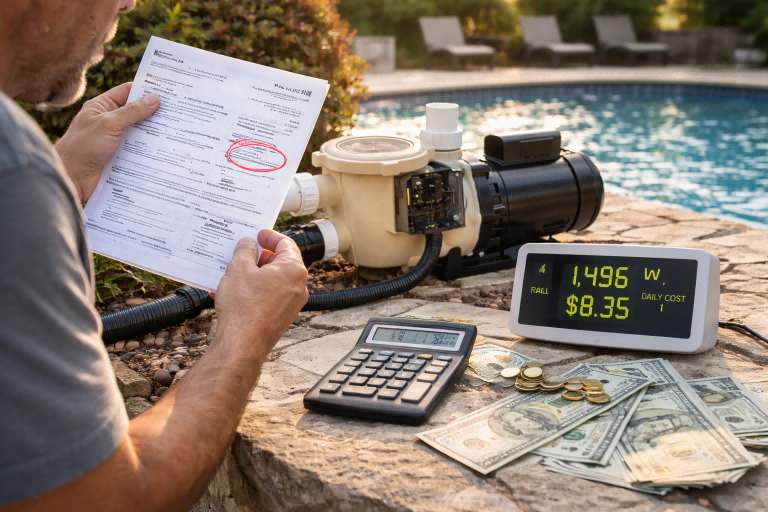Struggling with the tedious task of manually priming your pump?
A self-priming pump seems like the perfect solution, but its convenience comes with hidden costs and limitations.
Understanding these drawbacks is crucial before you invest.
Self-priming pumps have several key disadvantages.
They often have a higher initial cost, are less energy-efficient, and can be more complex to maintain than standard centrifugal pumps [^1].
They also face performance limitations with high suction lifts and when handling highly viscous fluids or solids [^2].
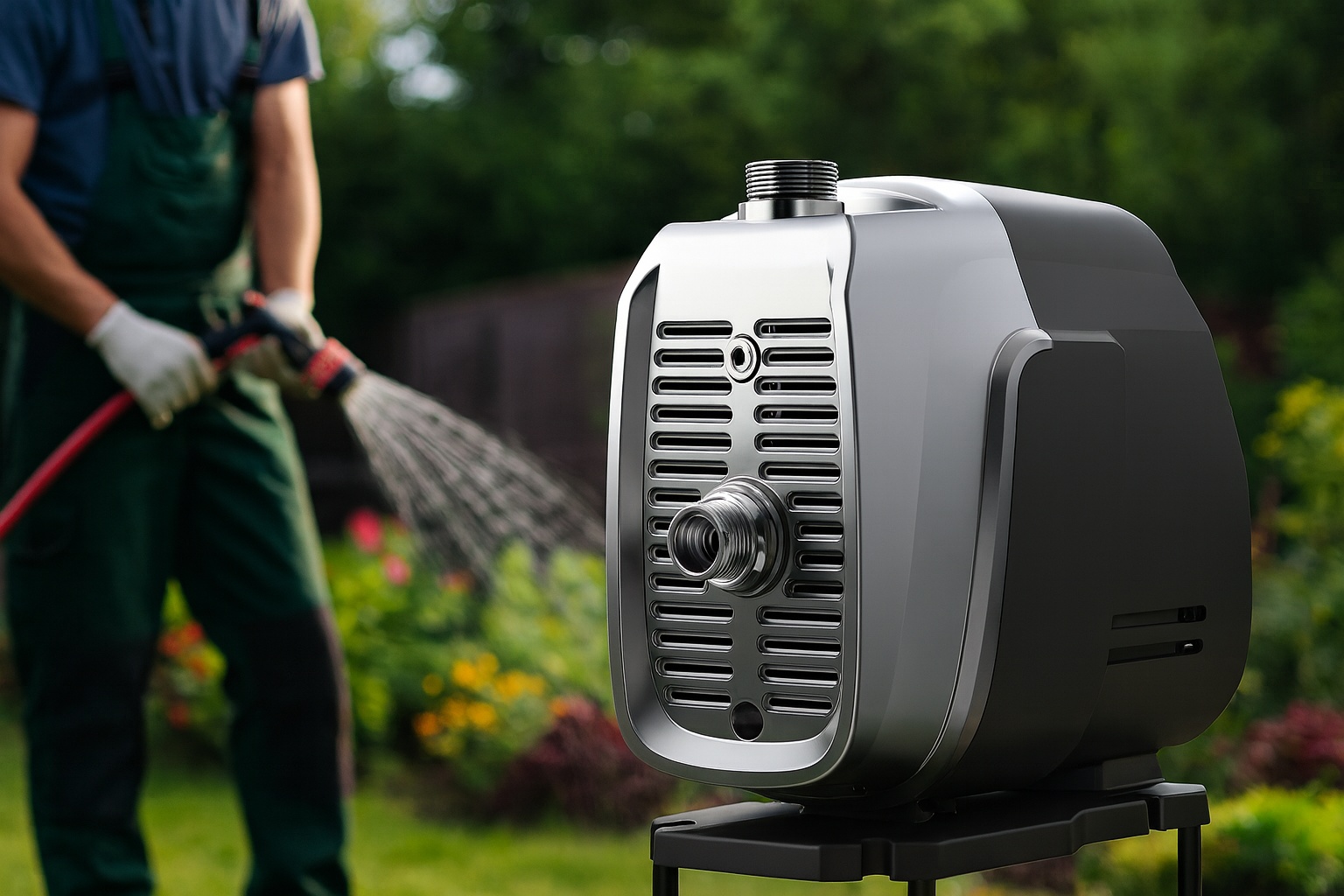
Self-priming pumps offer a tempting promise: a pump that handles its own priming, saving time and labor.
This capability makes them invaluable in applications with intermittent flow or where the pump is located above the fluid source.
However, this convenience is not without its trade-offs.
Engineers and operators must look beyond the primary benefit to understand the full picture.
The intricate design that enables self-priming also introduces vulnerabilities and operational constraints.
Failing to consider these disadvantages can lead to unexpected costs, subpar performance, and frustrating maintenance cycles.
Let's delve deeper into the specific drawbacks to ensure you choose the right pump for your system's long-term health and efficiency.
Higher Costs and Lower Efficiency
Are you concerned that the initial convenience of a self-priming pump might hurt your budget in the long run?
This is a valid concern for many.
Self-priming pumps often come with a higher purchase price and consume more energy during operation, impacting both your initial and long-term expenses [^3].
The financial implications of choosing a self-priming pump extend beyond the initial sticker price.
While the ability to automatically prime can reduce downtime and labor costs in certain scenarios, it's essential to weigh this against the total cost of ownership.
This includes the upfront investment, ongoing energy consumption, and potential maintenance expenses.
For applications where energy efficiency is a top priority or budgets are tight, these factors can make a standard centrifugal pump a more prudent choice.
A thorough analysis of both capital and operational expenditures is necessary to determine the true cost-effectiveness of a self-priming pump in your specific context.
The Upfront Investment
The advanced design of self-priming pumps is the primary reason for their higher initial cost.
Manufacturers incorporate specialized components to achieve the self-priming capability [^3].
This includes a larger casing or a built-in liquid reservoir, which is essential for trapping the fluid needed to start the priming cycle [^1].
Additionally, they may feature recirculation ports, valves, and more intricate volute designs.
These elements require more materials, more complex manufacturing processes, and tighter engineering tolerances, all of which contribute to a higher price tag compared to a standard centrifugal pump of similar capacity.
Energy Consumption Concerns
Efficiency is a major drawback of self-priming pumps.
The very process that allows the pump to prime itself—recirculating a mixture of air and liquid—introduces hydraulic inefficiencies [^4].
Energy is spent moving this mixture within the pump casing until all the air is purged from the suction line.
This internal recirculation means that a portion of the motor's power is not used for moving the fluid through the system, but rather for the priming process itself.
Once primed, the larger internal clearances required to handle air and sometimes solids can also lead to lower overall pumping efficiency compared to the tighter tolerances of a standard centrifugal pump.
| Cost Factor | Self-Priming Pump | Standard Centrifugal Pump |
|---|---|---|
| Initial Purchase Price | Higher | Lower |
| Energy Consumption | Higher | Lower |
| Installation Complexity | Can be simpler (no foot valve needed) | May require priming accessories |
| Long-Term Operating Cost | Potentially Higher | Potentially Lower |
This persistent energy loss can add up to significant operational costs over the life of the pump, making it a less-than-ideal choice for continuous-duty applications where energy efficiency is paramount.
Complex Design and Maintenance Challenges
Worried that a more complex pump will lead to more complicated and costly repairs?
The intricate mechanisms that enable self-priming can indeed make maintenance more demanding.
These pumps require skilled technicians for proper servicing, and their specialized parts can be more difficult to source and replace [^2].
The convenience of automated priming comes from a more complex design.
Unlike the straightforward construction of a standard centrifugal pump, a self-priming model contains additional chambers, valves, and pathways.
While these components are robust, they add to the number of potential failure points.
Regular inspection and maintenance are crucial to keep them in optimal condition.
Ignoring this can lead to priming failures, reduced performance, and eventually, costly breakdowns.
Understanding these maintenance requirements is essential for anyone considering this type of pump.
Why Are They More Complex?
The intricacy of a self-priming pump lies in its priming mechanism.
This system is designed to separate air from water and evacuate it from the suction line.
Key components that add to this complexity include:
- Large Priming Chamber: The pump casing is oversized to act as a reservoir, holding the liquid necessary for the priming cycle.
- Recirculation Port: This allows the trapped liquid to mix with air from the suction line at the impeller.
- Air Separation Chamber: A space where the air-liquid mixture is sent, allowing the lighter air to escape through the discharge while the heavier liquid falls back to be recirculated.
- Check Valves: Often integrated into the suction port to prevent liquid from siphoning back out of the reservoir when the pump is off.
Each of these components must work in perfect harmony to achieve a successful prime.
A failure in any one of them can render the entire pump ineffective.
The Need for Skilled Maintenance
When a standard centrifugal pump fails, the problem is often straightforward—a failed seal, a clogged impeller, or a motor issue.
Troubleshooting a self-priming pump, however, can be more complex [^9].
A failure to prime could be caused by a leak in the suction line, a blocked recirculation port, worn impeller clearances, or a faulty internal check valve.
Diagnosing the precise cause often requires a deeper understanding of the pump's specific design and operating principles.
This is why maintenance often demands more than a general mechanic; it requires technicians specifically trained on these types of pumps [^2].
Repairs may involve carefully disassembling the priming chamber, checking tight clearances, and ensuring all seals are perfectly intact to prevent air leaks, which are detrimental to the priming process.
This need for specialized knowledge can increase labor costs and potential downtime if a qualified technician is not readily available.
Performance Limitations Under Specific Conditions
Think a self-priming pump can handle any situation?
Think again.
These pumps have distinct performance limitations, especially when dealing with high suction lifts or challenging fluids.
They can lose efficiency dramatically at high lifts and may struggle with highly viscous liquids or fluids containing large solids [^2].
While self-priming pumps are versatile, they are not a universal solution.
Their performance is highly dependent on the application's specific parameters.
The very mechanism that helps them prime can become a hindrance under demanding conditions.
The energy used to lift and circulate the priming fluid can reduce the pump's overall efficiency, a problem that gets worse as the suction lift increases.
It's critical to evaluate these performance boundaries carefully to ensure the pump you choose will operate reliably and efficiently within the demands of your system.
The High Suction Lift Hurdle
Suction lift is the vertical distance from the liquid's surface to the pump's centerline.
While self-priming pumps are designed to handle suction lifts, their efficiency decreases as this distance grows [^7].
The pump has to work harder to evacuate the larger volume of air in a longer or higher suction pipe.
This extended priming time consumes more energy and puts more wear on the pump's components.
Furthermore, every self-priming pump has a maximum practical suction lift, typically around 25 feet (7.6 meters) under ideal conditions.
Exceeding this, or even approaching it, can lead to failed priming, cavitation, and a significant drop in flow rate and pressure.
Sensitivity to Fluid Properties
Self-priming pumps are not always the best choice for handling every type of fluid.
Their performance can be particularly sensitive to two key properties: viscosity and solids content [^6].
- Viscosity: Highly viscous fluids, like oils or thick slurries, are more resistant to flow. This makes it difficult for the pump to create the turbulent mixing of air and liquid required for priming. The thick liquid can also struggle to recirculate properly, leading to very long priming times or complete priming failure.
- Solids and Abrasives: While many self-priming pumps are designed to handle solids, there are limits. Large or hard particles can damage the impeller or get lodged in the recirculation port, blocking the priming mechanism. Abrasive slurries can rapidly wear down the tight clearances between the impeller and volute, which are critical for creating the vacuum needed to prime.
| Fluid Type | Performance of Self-Priming Pump | Potential Issues |
|---|---|---|
| Clean Water | Excellent | Few issues, operates as designed. |
| High Viscosity Liquids | Poor to Fair | Difficulty priming, reduced flow rate. |
| Liquids with Large Solids | Fair to Good | Risk of clogging recirculation ports. |
| Abrasive Slurries | Fair | Accelerated wear on internal components. |
It's crucial to match the pump's specifications with the fluid's characteristics to avoid premature failure and ensure reliable operation.
Operational Quirks and Installation Constraints
Assuming a "self-priming" pump needs no attention to prime correctly?
This common misconception can lead to major operational headaches.
These pumps still require an initial manual prime and must be installed close to the liquid source to function reliably and prevent issues [^5].
The term "self-priming" can be misleading.
It doesn't mean the pump works without any liquid.
Instead, it refers to the pump's ability to re-prime itself after the initial fill, provided its reservoir remains full.
This crucial detail, along with strict installation requirements, is often overlooked.
Understanding these operational nuances is key to preventing the most common problems associated with these pumps, such as failure to prime, low flow, and excessive noise.
Proper setup is not just recommended; it's essential for success.
The "Self-Priming" Misnomer
A self-priming pump cannot operate if it is started completely dry.
The name refers to its ability to purge air from its suction line automatically, but it can only do so if its casing or priming chamber is filled with liquid before the first start-up [^5].
This initial charge of liquid is what the pump uses to create the air-liquid mixture that starts the priming process.
If this liquid drains out due to a leak or evaporates over a long period of disuse, the pump will fail to prime.
Therefore, operators must perform two key checks:
- Initial Manual Priming: Before its first use or after maintenance, the pump casing must be manually filled with liquid.
- Periodic Re-priming: It's good practice to check the liquid level in the casing periodically, especially in intermittent-use applications, to ensure it hasn't depleted.
Proximity to the Liquid Source is Key
To ensure the pump's reservoir doesn't deplete during the priming process, the pump must be installed as close to the liquid source as possible [^1].
The longer and more complex the suction piping, the more air the pump has to evacuate.
A large volume of air requires a longer priming time, which can overheat the liquid in the casing.
In extreme cases, the liquid can flash to steam, or the reservoir can be emptied before the prime is complete, causing the pump to run dry and damage the mechanical seal.
Best practices for installation include:
- Minimizing Suction Pipe Length: Keep the suction line short and direct.
- Reducing Bends: Use as few elbows and fittings as possible to reduce friction losses.
- Ensuring Airtight Connections: Even a tiny air leak in the suction line can prevent the pump from creating the necessary vacuum to prime.
Failure to adhere to these installation constraints is one of the most common reasons for priming failure.
Conclusion
Self-priming pumps have clear drawbacks, including higher costs, lower efficiency, complex maintenance, and performance limits.
Understanding these is essential for making an informed decision that ensures long-term operational success.
Frequently Asked Questions (FAQs)
Do self-priming pumps lose their prime?
Yes, they can lose their prime if the liquid in the casing drains out due to a leak in a foot valve or evaporates during long periods of inactivity.
Can a self-priming pump run dry?
No, a self-priming pump should never be run completely dry. It requires an initial volume of liquid in its casing to start the priming process and lubricate the seal.
How efficient are self-priming pumps?
They are generally less energy-efficient than standard centrifugal pumps because their internal recirculation process, used for priming, consumes extra energy during operation.
What is the maximum suction lift of a self-priming pump?
The maximum suction lift is typically around 25 feet (7.6 meters) in ideal conditions, but efficiency decreases significantly as the pump approaches this limit.
Are self-priming pumps more expensive?
Yes, they usually have a higher initial purchase price due to their more complex design, larger casing, and additional internal components required for priming.
Why is my self-priming pump not working?
Common causes include an insufficient initial prime, air leaks in the suction line, a clogged impeller or recirculation port, or a suction lift that is too high.


